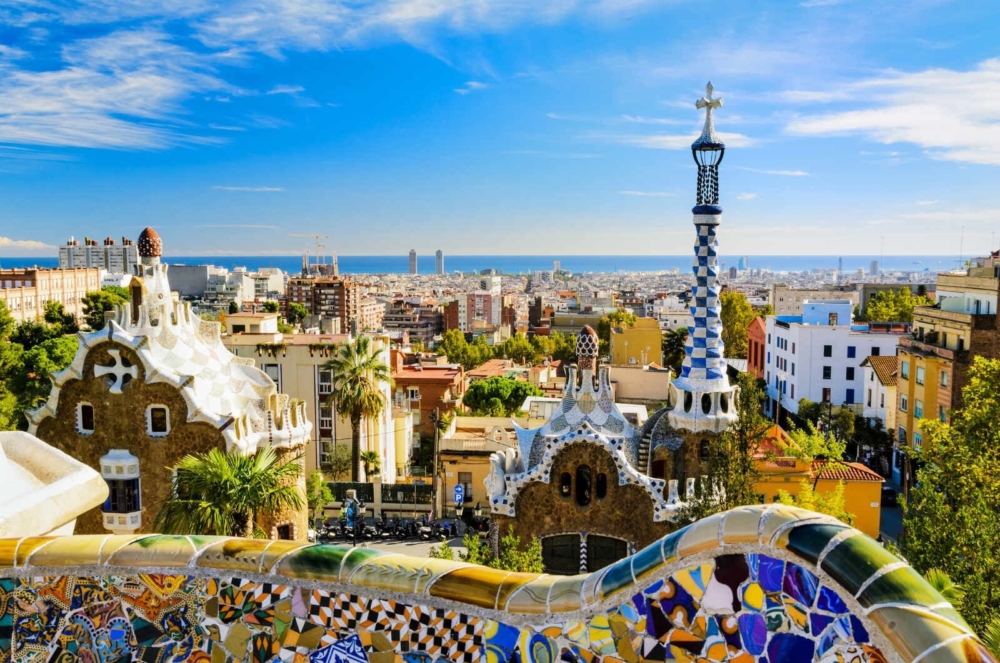No matter who you are, Spain is always ready to take your senses on a ride. This colorful European country embodies the national motto “Plus Ultra” (which loosely translates to “Further Beyond”) in almost every corner. Fine wine, wonderful music, magnificent vistas, and exquisite tourist attractions give the nation an intoxicating vibe that will pique your wanderlust again and again.
For American visitors, there is only one thing that might prevent us from making the most out of the trip: The language. A recent study indicates that about 60% of Spain’s population does not speak English at all. Among the remaining 35%, most don’t speak it very well either.
So, before you pack your bags and jump on a plane, why not learn a little español? Knowing some basic phrases, such as ‘I don’t understand’ in Spanish, will help you prevent unnecessary troubles and make your stay much more comfortable. Who knows, you might make new friends too!
How To Say ‘I Don’t Understand’ In Spanish?
One of the phrases every traveler needs is ‘I don’t understand’ in Spanish. Even if you have learned the language for a while, you might still find it challenging to understand native speakers since Spanish is really fast and incredibly diverse. In that case, there are several expressions that will help you:
- ‘No entiendo’ (‘No en-tee-en-doh’) – ‘I don’t understand’: This is the most common way to say ‘I don’t understand’ in Spanish. Another option with the same meaning is ‘no entendí’, which stands for ‘I didn’t understand’.
- ‘¿Cómo?’ (‘Coh-moh’) – ‘What?’: Use this one simple word with a puzzled expression on your face and the other will know that you don’t get what they say.
- ‘¿Me lo puedes repetir, por favor?’ (‘Meh-loh poh-dehr por fa-bor’) – ‘Could you repeat that, please?’: Okay, perhaps you don’t need to say that you don’t get it. Rather, you let the other person know that you need them to repeat a certain phrase.
- ‘Más lento, por favor’ (‘Mahs lehn-toh por fa-bor’) – ‘Slower, please’: In case the person with whom you are conversing is talking too fast (again, Spanish is one of the fastest spoken languages in the world!), you can ask them to repeat what they just said, but more slowly.
Knowing various ways to say ‘I don’t understand’ in Spanish will allow you to take time to process what you’ve just heard, hear it again, and communicate more effectively with native speakers. It doesn’t only help you during your trip but also comes in handy for both new and experienced language learners.
But… if you are totally stuck in the conversation, you can always fall back to this phrase to get yourself out of trouble:
- ‘¿Habla inglés?’ (‘Ab-la in-glays’) – ‘Do you speak English?’
How To Say ‘I Don’t Understand’ In Spanish?
Other Phrases Travelers Should Know

‘¡Hola!’ – ‘Hello’
Locals will always appreciate your efforts to communicate in their language, so it helps to know some greetings. In fact, you only need a common Spanish word to greet someone, and you probably know it already: ‘¡Hola!’ (‘Oh-lah’), which stands for ‘Hello’. Note that the letter h is silent in Spanish.
Still, if you want to go beyond the casualty, there are a few other expressions:
- ‘Buenos días’ (‘Bwen-os dee-ahs’) – ‘Good morning’
- ‘Buenas tardes’ (‘Bwen-as tar-des’) – ‘Good afternoon’
- ‘Buenas noches’ (‘Bway-nahs noh-chess’) – ‘Good evening’
- ‘¿Cómo estás?’ (‘Co-mo eh-stas?’) – ‘How are you?’
‘Me llamo…’- ‘My Name Is…’
So, what to say in a situation that requires you to introduce your name? The simplest way is ‘Me llamo…’ (may yahm-oh), which means ‘My name is…’ followed by your name. For example, “Hola, me llamo Christina” means “Hello, I’m Christina.” Alternatives include:
- ‘Soy…’ – ‘I’m…’
- ‘Mi nombre es…’ (‘Mee nohm-breh ess’) – ‘My name is…’
‘Gracias’ – ‘Thanh You’

You want to express your gratitude to someone for showing you a location, giving up their seat for you, or letting you go ahead of them in a line? You can use any of the following options, but bear in mind that these phrases should always be said in a nice and friendly tone to convey your message:
- ‘Gracias’ (Grah-seeahs) – ‘Thank you’
- ‘Muchas gracias’ (‘Moo-chahs grah-seeahs’) – ‘Thank you very much’
- ‘Mil gracias’ (Meel grah-seeahs) – ‘A thousand thank you’
‘Lo Siento’ – ‘Sorry’
Saying sorry in Spanish is a bit more troublesome, mainly because of the subjunctive. For travelers, however, you can simply use ‘Lo siento’ (‘lo sjen-to’), which literally means ‘I’m sorry for it’. The phrase is not commonly used when you are excusing yourself for a minor inconvenience, but you’ll occasionally hear people use it in those contexts as well.
‘Disculpe’ – ‘Excuse me’
While traveling in Spain, there might be situations that require you to ask for directions. To start, use these expressions to grab someone’s attention:
- ‘Disculpe’ (‘Dis-kul-pay’) – ‘Excuse me’
- ‘¿Puede ayudarme?’ (‘Pweh-dhe ah-yoo-dh-ahr-meh’) – ‘Can you help me?’
‘¿Dónde está?’ – ‘Where Is…?’
The simplest way to ask for location is to use ‘¿Dónde está?’ (‘Dhohn-dheh ehs-tah’) – ‘Where is…?’ followed by the noun you are looking for. For example:
- ‘¿Dónde está el baño?’ (‘Don-day es-tah el bah-nyo’) – ‘Where is the bathroom?’
- ‘¿ Dónde está el banco?’ (‘Don-day es-tah el ban-koh’) – ‘Where is the bank?’
- ‘¿Dónde está la parada de autobús más cercana?’ (‘Don-day es-tah la pa-rah-dah de ow-to-boos mas ser-ka-nah’) – ‘Where’s the nearest bus stop?’
- ‘¿Dónde está la calle [de Alcalá]?’ (‘Don-day es-tah la ka-yay de al-cal-ah’) – ‘Where is [Alcalá] Street?’
Now that you know how to ask for directions, but it is quite pointless if you don’t get the instructions you receive. It would be even more helpful if you memorize the following words to comprehend what the helpful locals are trying to say when you ask them for help:
- ‘Aquí’ (‘Ah-kee’) – ‘Here’
- ‘Allí’ (‘Ay-ee’) – ‘There’
- ‘A la derecha’ (‘A la de-re-cha’) – ‘On the right’
- ‘A la izquierda’ (‘A la iz-kee-er-da’) – ‘On the left’
- ‘Derecho’ (‘De-re-cho’) – ‘Traight ahead’
- ‘En la esquina’ (‘En la es-kee-nah’) – ‘At the corner’
How To Ask For Directions In Spanish?
‘Yo Quiero…’ – ‘I Want…’
You might be astonished at how much simpler things get with only one phrase: ‘Yo Quiero…’ (Yo kee-eh-ro), which stands for ‘I Want…’. Of course, this is not gonna make you the best Spanish speaker, but in most cases, it will help you get what you, well, want.
Let’s see how you can put this into use:
- ‘Yo quiero un menú’ (Yo kee-eh-ro oon me-noo) – ‘I want a menu’
- ‘Yo quiero un taxi’ (Yo kee-eh-ro oon taxi) – ‘I want a taxi’
‘¿Cuánto Cuesta?’ – ‘How Much Is It?’
No matter where you go, it is no secret that visitors are frequently caught in tourist traps, like overpaying for meals and accommodations. If you make an effort to communicate with the vendors in Spanish, they may have a warmer disposition towards you, and you may even get better deals than other travelers.
That said, ‘¿Cuánto Cuesta?’ (Kwan-to kwes-ta) – ‘How much is it?’ is the most essential phrase to know. Whether you want to ask about the costs of daily products like food, clothing, or random knick-knacks, this will be useful throughout the trip to Spain or any Spanish-speaking country.
‘Qué Es Eso?’ – ‘What Is That?’

During your journey, you will find yourself having a lot of questions. Even when you don’t have a large Spanish vocabulary, knowing how to ask ‘What is that’ in Spanish will help clear your confusion:
- ¿Qué es? (Kay es) – ‘What is it?’
- ¿Qué es eso? (Kay es eh-soh) – ‘What is that?’
‘No Hablo Ingles’ – ‘I Don’t Speak English’
If you want to say ‘I don’t speak English’ in Spanish, you can use ‘No hablo Ingles’ (noh ah-bloh eeng-glehs). Adding ‘sorry’ at the beginning of the phrase and say, ‘Lo siento, no hablo ingles’ would be a thoughtful way to apologize for not speaking English.
You’re All Set For Your Spanish Adventure!
Spend some time to learn these travel-friendly Spanish phrases, and you will be able to make the most out of your Spain trip! With these simple expressions, I’m sure you will have interesting encounters and acquire life-changing experiences along the road. Who knows, perhaps spending some time in La Piel de Toro will inspire you to take a Spanish course!
Other far-out topics are waiting for your click:
Puerto Rico weather in December: Is It Favorable For A Visit?

